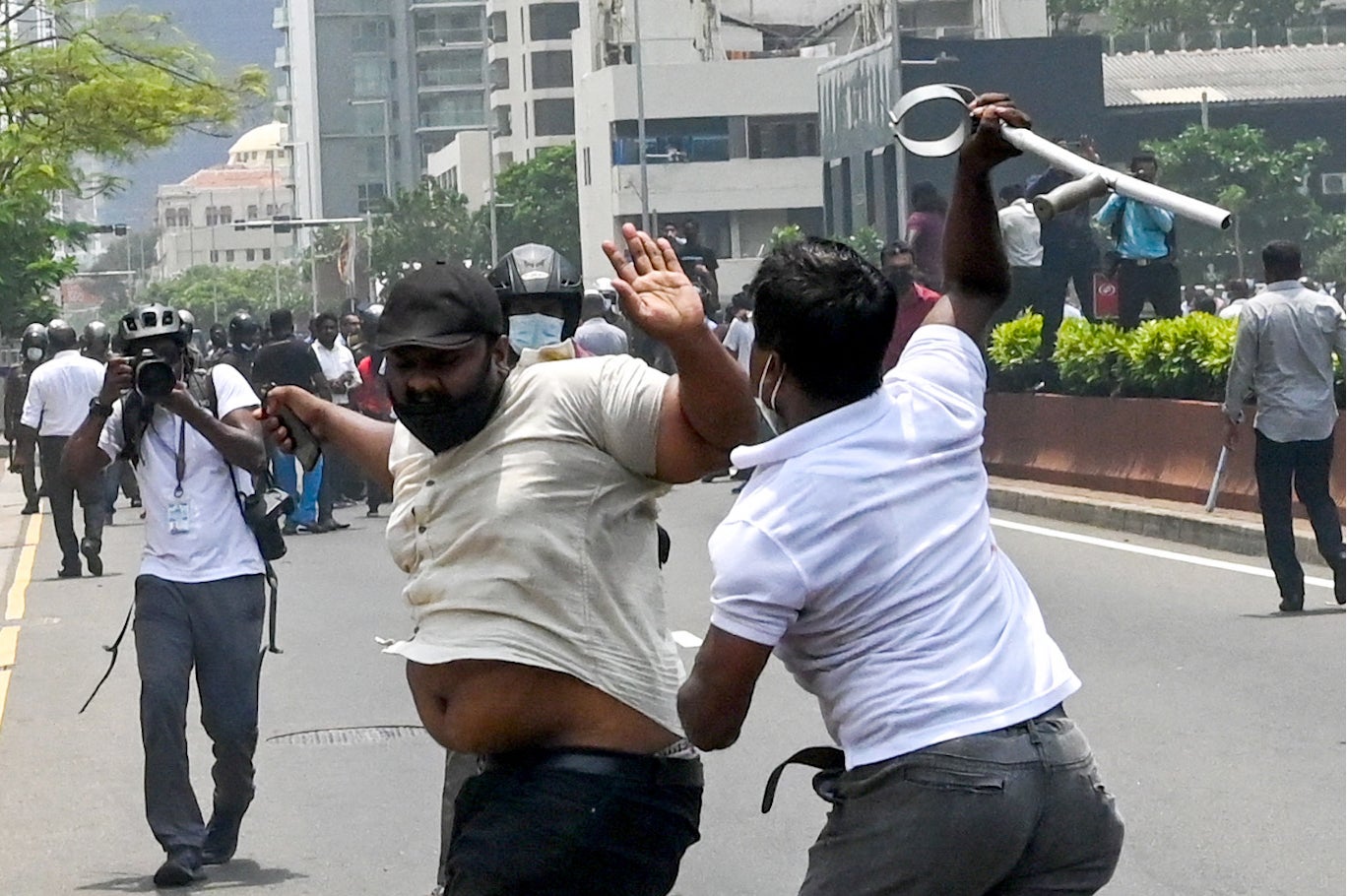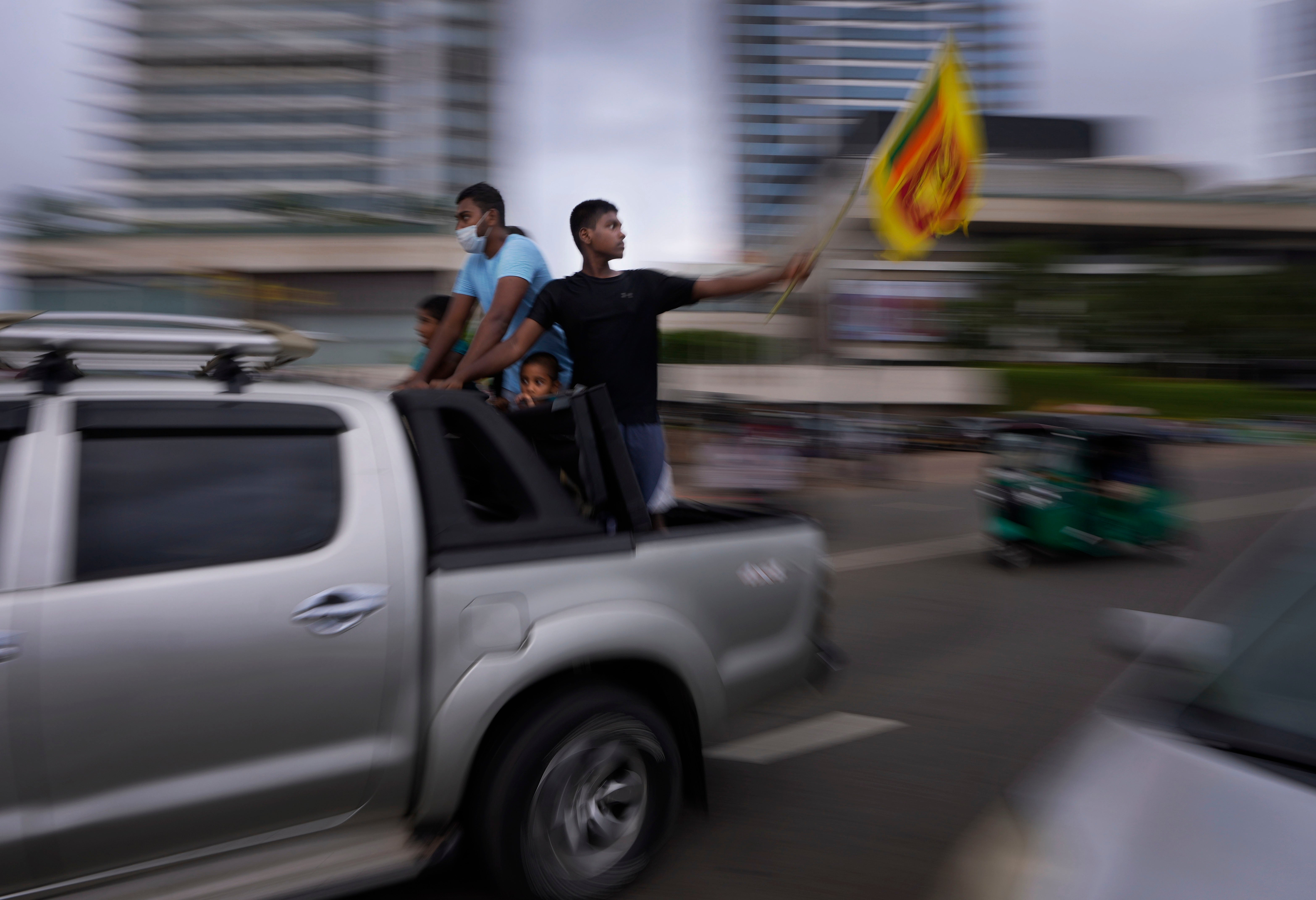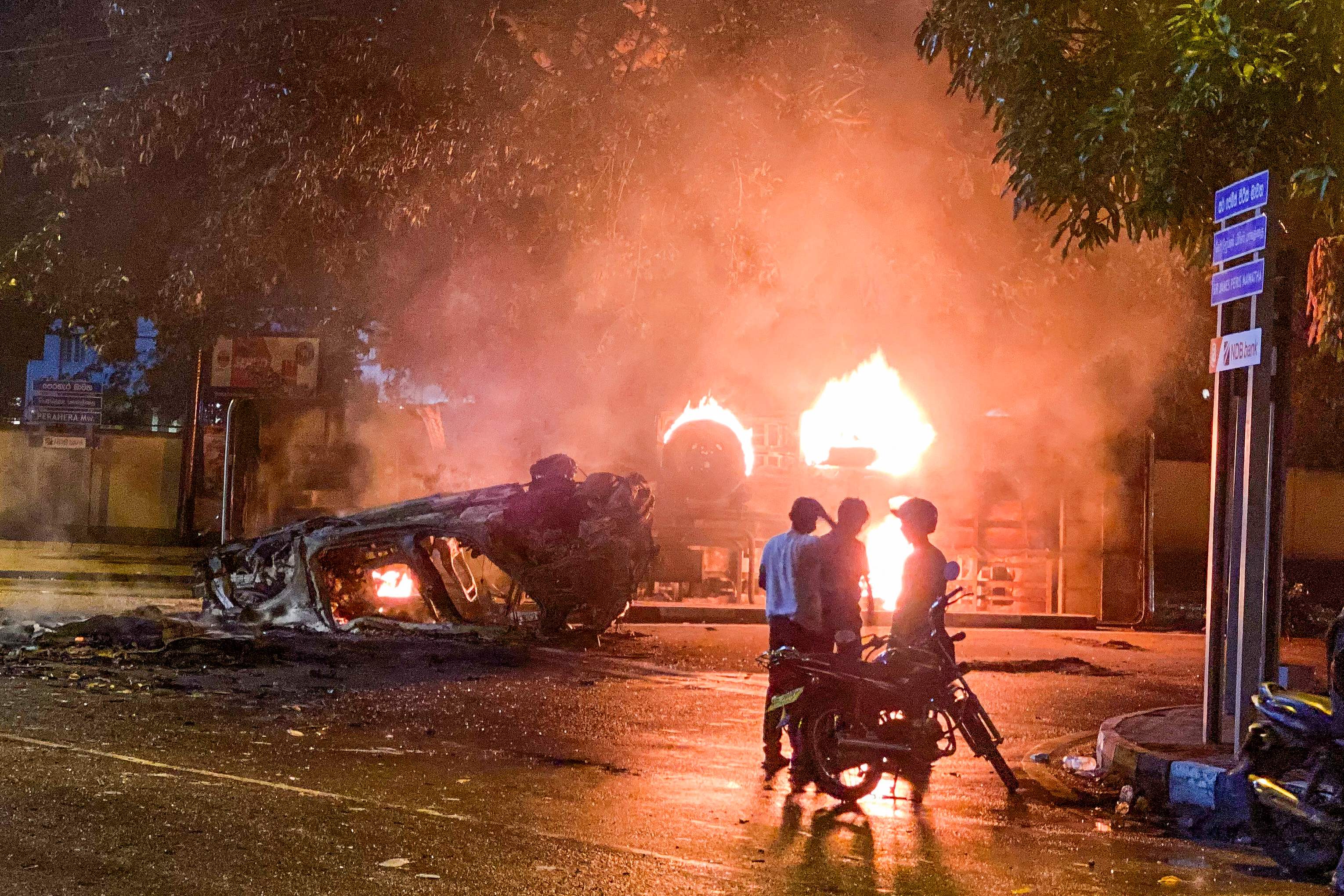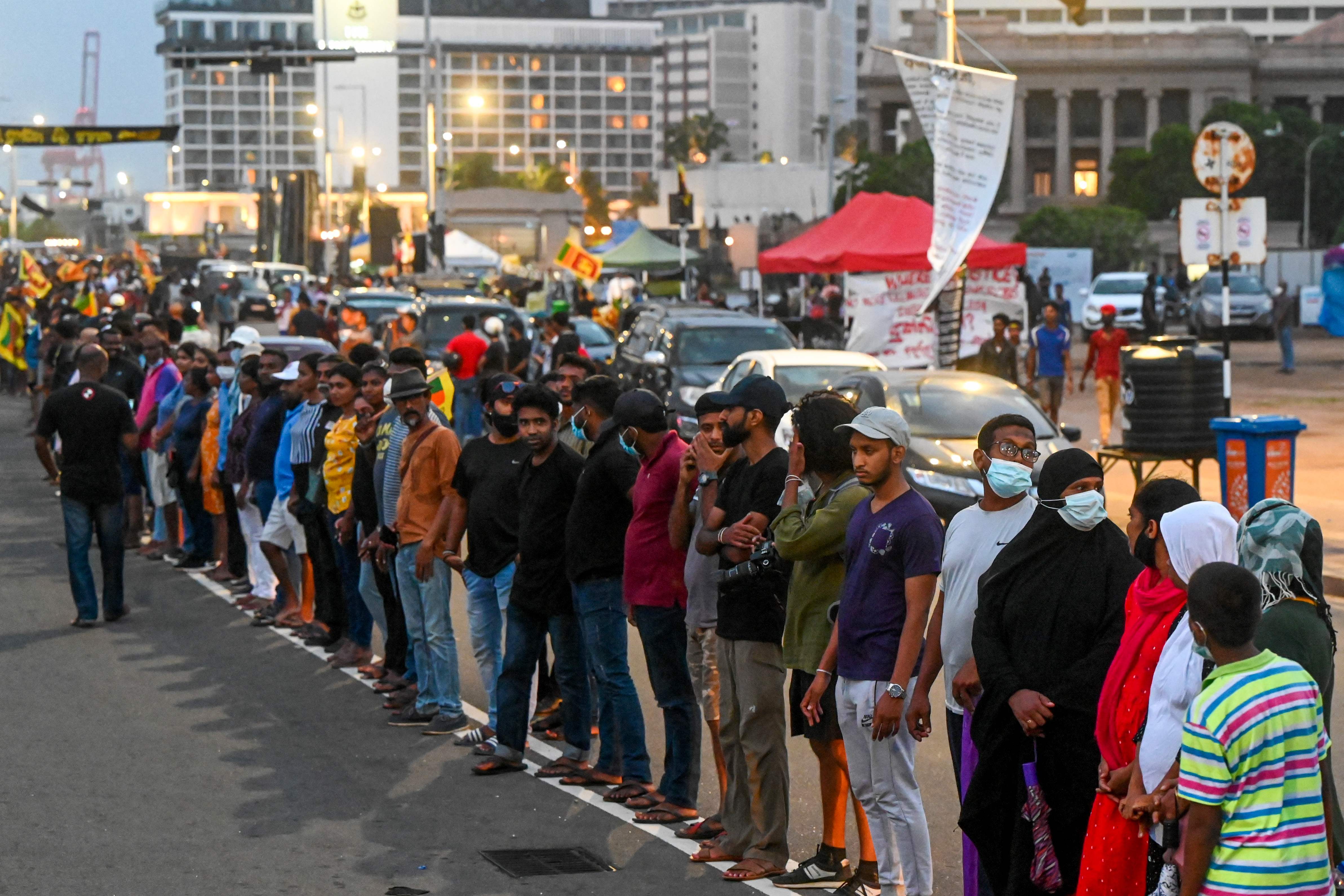‘Nothing can stop us’: Sri Lanka protesters undeterred by brutal clashes
Sri Lankans sense change and say they won’t leave until the country is rid of the ruling Rajapaksa family, as Qadijah Irshad reports from Colombo

Your support helps us to tell the story
From reproductive rights to climate change to Big Tech, The Independent is on the ground when the story is developing. Whether it's investigating the financials of Elon Musk's pro-Trump PAC or producing our latest documentary, 'The A Word', which shines a light on the American women fighting for reproductive rights, we know how important it is to parse out the facts from the messaging.
At such a critical moment in US history, we need reporters on the ground. Your donation allows us to keep sending journalists to speak to both sides of the story.
The Independent is trusted by Americans across the entire political spectrum. And unlike many other quality news outlets, we choose not to lock Americans out of our reporting and analysis with paywalls. We believe quality journalism should be available to everyone, paid for by those who can afford it.
Your support makes all the difference.Less than a day after Sri Lankan government supporters attacked a peaceful protest site and beat up unarmed protesters, leading to the resignation of prime minister Mahinda Rajapaksa, the cry for freedom is returning to this village by the sea. If anything, the voices have only grown stronger.
Despite a strict curfew announced after violent clashes, by Tuesday afternoon more than 2,000 anti-government protesters converged on the seaside promenade that has become the centre of agitation for the past two months.
Eight people, including a politician and two police, were killed and 219 were injured in Monday’s clashes, which saw dozens of vehicles and buildings burned.
While the roads in the capital Colombo remain heavily guarded by the military and security forces, men, women and children made their way in vehicles and on foot to the “Gota Go Gama” protest site – where demonstrators are sending a message to Mahinda’s brother, President Gotabaya “Gota” Rajapaksa.
The chant “Go home Gota!” gets louder as a group of lawyers take to the roughly built stage, demanding justice and reformation of a country which they say has been brought to the point of economic doom by the Rajapaksa family’s mismanagement.
The men and women beaten on Monday by Rajapaksa supporters wielding poles and iron bars were back as well, undeterred.
“Nothing can stop us, nothing can break us. Even if they kill a few of us, there will be thousands more rising up behind,” says a 40-year-old housewife nursing a broken nose, who asked not to be named. “The attackers sought me out and punched my face and my body until I fell down because of my protest videos that have gone viral” says the mother of two, showing a clip of a rousing speech broadcast on Indian news channels. “But we won’t leave until this corrupt family does.”
The clashes between Rajapaksa supporters and anti-government protesters culminated in the resignation, and later the evacuation, of Mahinda Rajapaksa and his immediate family from his official residence, as thousands of protesters stormed the Temple Trees premises.
The prime minister had to be rescued in a pre-dawn operation by the military, with police firing teargas and warning shots to keep back the crowd.
While the resignation of one Rajapaksa brother marks an important moment in this crisis, “that’s not enough,” says Harendra Gunaratne, a 27-year-old accounts executive who quit his job to become a permanent resident of the protest village.

“The president needs to go. The entire family needs to go. We need a system change. We won’t leave until this happens,” he says.
Despite the bravado, most protesters at the site are still afraid to reveal their identities, a throwback to years of Rajapaksa anarchy where journalists, rights activists and civilians voicing anti-government sentiments were allegedly abducted and killed by the brothers.
Sri Lanka’s defence ministry has ordered security forces to shoot anyone causing injury to people or property to contain widespread arson and mob violence targeting government supporters. Defying a 36-hour nationwide curfew, several hundred protesters continued to chant slogans against the government on Tuesday. Some people attacked the homes of government supporters, but the violence that raged Monday had largely abated.
A group of priests tell The Independent that they were back at the protest site despite the fact several of their number are still in hospital after the attacks, because they “believe in justice”.
“We are here to fight for the poor and the younger generation. We are fighting for justice,” says a young priest who said he witnessed drunk government supporters chasing and beating up his fellow clergymen.
The clashes began on Monday when more than 3,000 Rajapaksa supporters attacked the Gota Go Gama protest site after a rousing speech by prime minister Mahinda Rajapaksa, in which he promised to safeguard the “interests of the nation”.
The mob surrounded the protesters, beating them up with steel rods and batons and destroying and setting fire to the premises. As the violence escalated, civilians from all walks of life converged on the site and retaliated.
When the police and military arrived, they allowed the Rajapaksa supporters to continue their attacks, according to eye witnesses.
“Most of them were drunk and they were obviously paid to be here,” says Saman Jayakody, a university student whose hand was fractured by a steel rod during the violence. “It was a very synchronised attack. But they forgot that this struggle is about people’s power. My uncle who is 68 came as soon as he heard about the violence, to help us defend ourselves. We will not step down.”

As the violence spread from the Gota Go Gama site, anti-Rajapaksa mobs set fire to houses of ministers and other pro-government parliamentarians, as well as Mahinda Rajapaksa’s house in his constituency Kurunegala, the Rajapaksa’s ancestral home just outside Colombo, and a boutique hotel owned by one of his sons.
Buses in which the Rajapaksa supporters arrived were also attacked and set ablaze by protesters, while young men wielding sticks checked vehicles for Rajapaksa supporters heading towards the Katunayake international airport.
While the current location of the prime minister is unknown, mobs of protesters gathered outside the Trincomalee naval base following rumours that he was taking refuge there, and demanded the authorities hand him over.

“We don’t want him to just leave, we want this family to give back everything they robbed from us, and then we want them to be tried in courts,” said Saman Wickramarachie, a protester, on the phone from Trincomalee.
Sri Lanka’s economy is on the verge of collapse with public frustration rising as the country faces the most severe crisis since its independence from British rule in 1948. Months of long blackouts due to power shortages, and a severe lack of necessities including food, medicine, fuel and cooking gas, have driven people to the brink of desperation.
The public as well as opposition political parties blame the Rajapaksas for mismanagement of funds, with the government announcing a default on all its foreign debt obligations. The brothers are accused of waiting until it was too late to engage the International Monetary Fund over a bailout, and other forms of international assistance have not been forthcoming as long as the Rajapaksa brothers, accused of severe corruption, remain at the country’s helm.
With the powerful prime minister – who himself served 10 years as president – now gone, sources say that former parliament speaker Karu Jayasuriya will fill the void as interim prime minister.
“But what next?” asks a 38-year-old lawyer, who was helping rebuild Gota Go Gama. “The president won’t quit. And we will have the same corrupt cycle all over again. And still, we trust our children will have a future here.”
Join our commenting forum
Join thought-provoking conversations, follow other Independent readers and see their replies
Comments